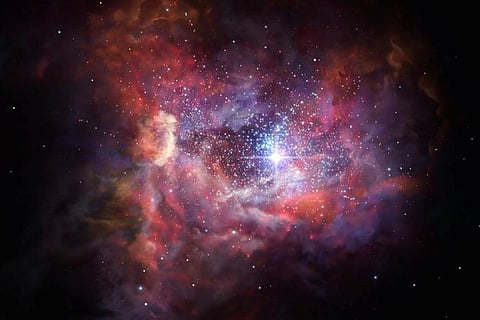

Chennai
“There’s something out there unknown,” said Tod Lauer, of the National Optical-Infrared Astronomy Research Laboratory in Tucson, Ariz.
“The universe is not completely dark, and we don’t yet completely know what it comprises.” Four billion miles from the sun, far from bright planets and the light scattered by interplanetary dust, empty space was about twice as bright as would be expected Dr. Lauer and his colleagues found.
The most likely explanation, he said, was that there were more very faint galaxies or star clusters contributing to the background light of the universe than their models indicated. Or even that black holes in the centers of otherwise undistinguished galaxies were pumping extra energy into the void. A less exciting possibility, Dr. Lauer said in an email, was that “we messed up and missed a light source or camera artifact that we should have figured out. This is what I worry about the most.”
A more intriguing, if speculative, suggestion involves what might be called cold dim matter. The universe is thought to be filled with “dark matter,” its exact substance unknown but whose gravity shapes the visible cosmos. Some theories suggest that this matter could be clouds of exotic subatomic particles that decay radioactively or collide and annihilate themselves in flashes of energy that add to the universal glow. Dr. Lauer and his colleagues prefer to leave such speculations to particle physicists. “Our work is solely concerned with measuring the flux level itself,” he said in an email.
“As observers, we offer this up for those who can figure out what to do with it.” Marc Postman, an astronomer at the Space Telescope Science Institute in Baltimore and an author of the report, which was published online in November, said, “It is important to do this to get an estimate of the total energy content of the universe, which helps inform us about the overall cosmic history of star formation.” For centuries, the darkness of the night sky was the source of a paradox named after the German astronomer Heinrich Wilhelm Olbers.
Presumably, in an infinite static universe, every line of sight ends at a star, so shouldn’t the sky appear as bright as the sun? But astronomers now know that the universe is only 13.8 billion years old and expanding. As a result, most lines of sight do not end on stars but on the fading glow of the Big Bang, and the wavelengths of the glow are now so extended that they are invisible to the eye, making the sky look dark. It’s no small feat to add up all the light you cannot see. There are distant galaxies too faint to trip the most sensitive detectors on giant telescopes, but which pump energy into the dust and gas that is strewn about space. The New Horizons spacecraft was launched on January 19, 2006, and sped by Pluto on July 14, 2015.
On Jan 1., 2019, it zoomed past Arrokoth, formerly called Ultima Thule, one of untold numbers of cosmic icebergs that live in the Kuiper belt on the outskirts of the solar system. It is still going. Dr. Lauer’s measurements were based on seven images from the Long-Range Reconnaissance Imager, a camera on New Horizons, and taken when the spacecraft was some 4 billion miles from Earth. At that distance the spacecraft was beyond the distracting glow of planets or of interplanetary dust. Indeed, Dr. Postman said, going even 10 times farther out would not have produced a cleaner darkness
Dennis Overbye is a correspondent for NYT©2020
The New York Times
Visit news.dtnext.in to explore our interactive epaper!
Download the DT Next app for more exciting features!
Click here for iOS
Click here for Android